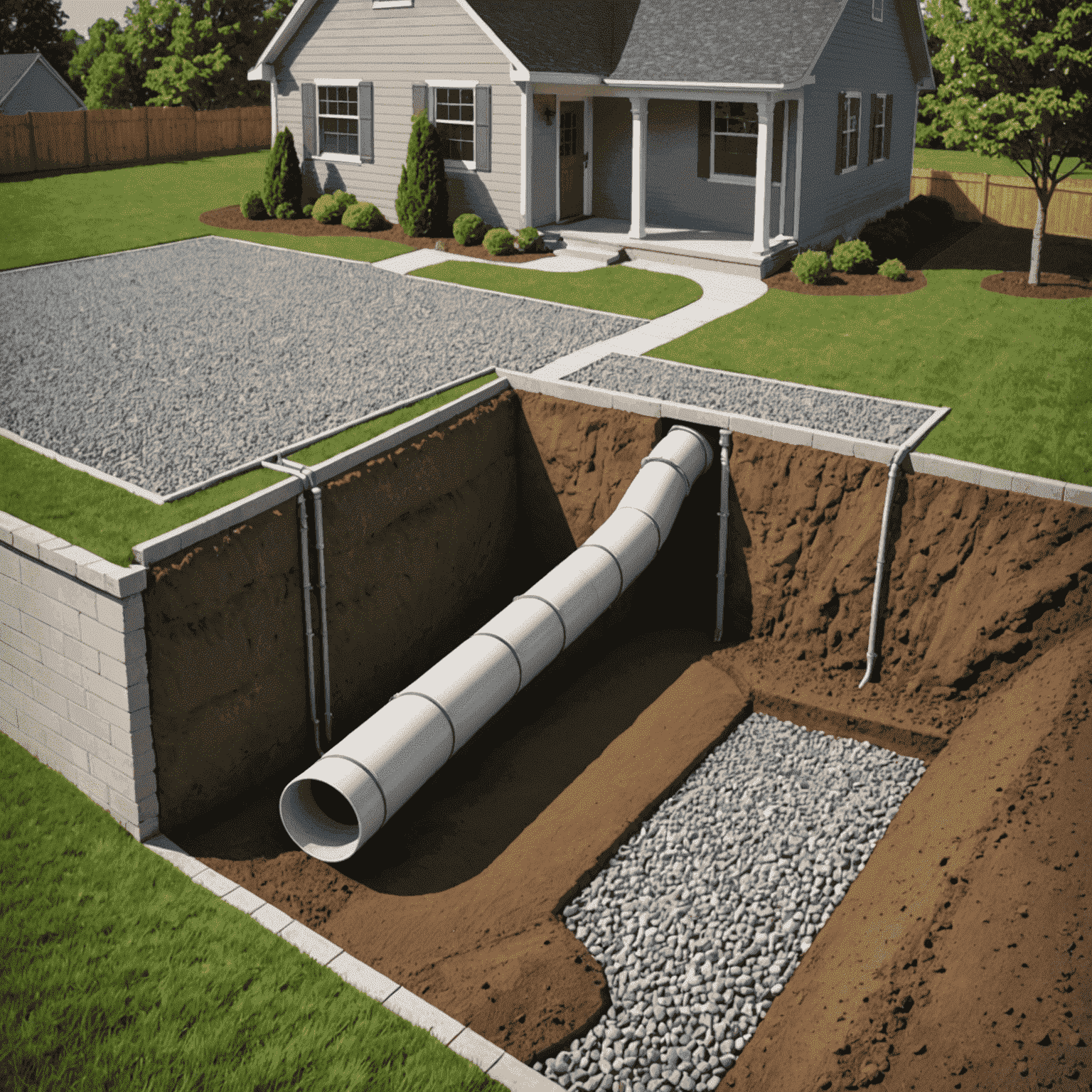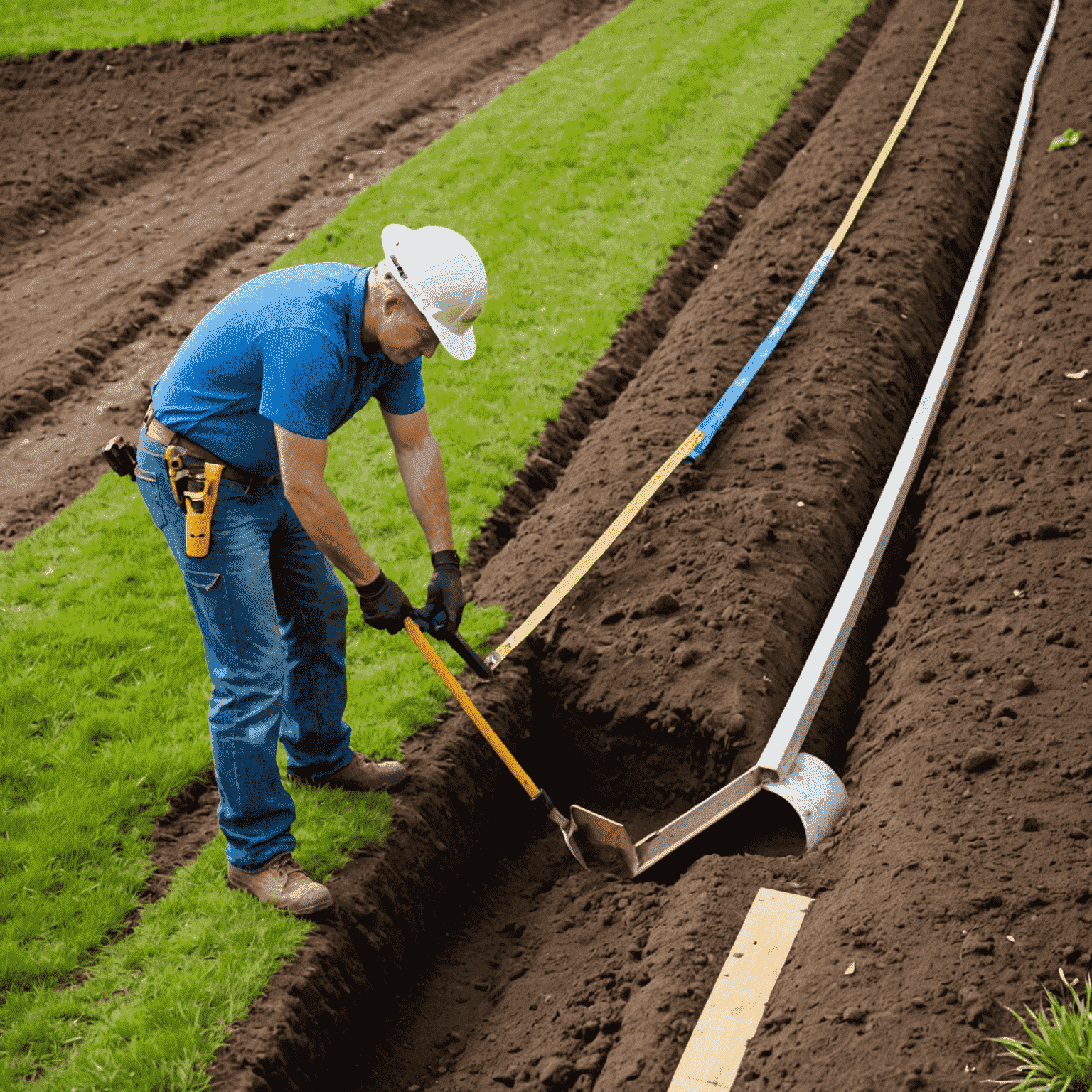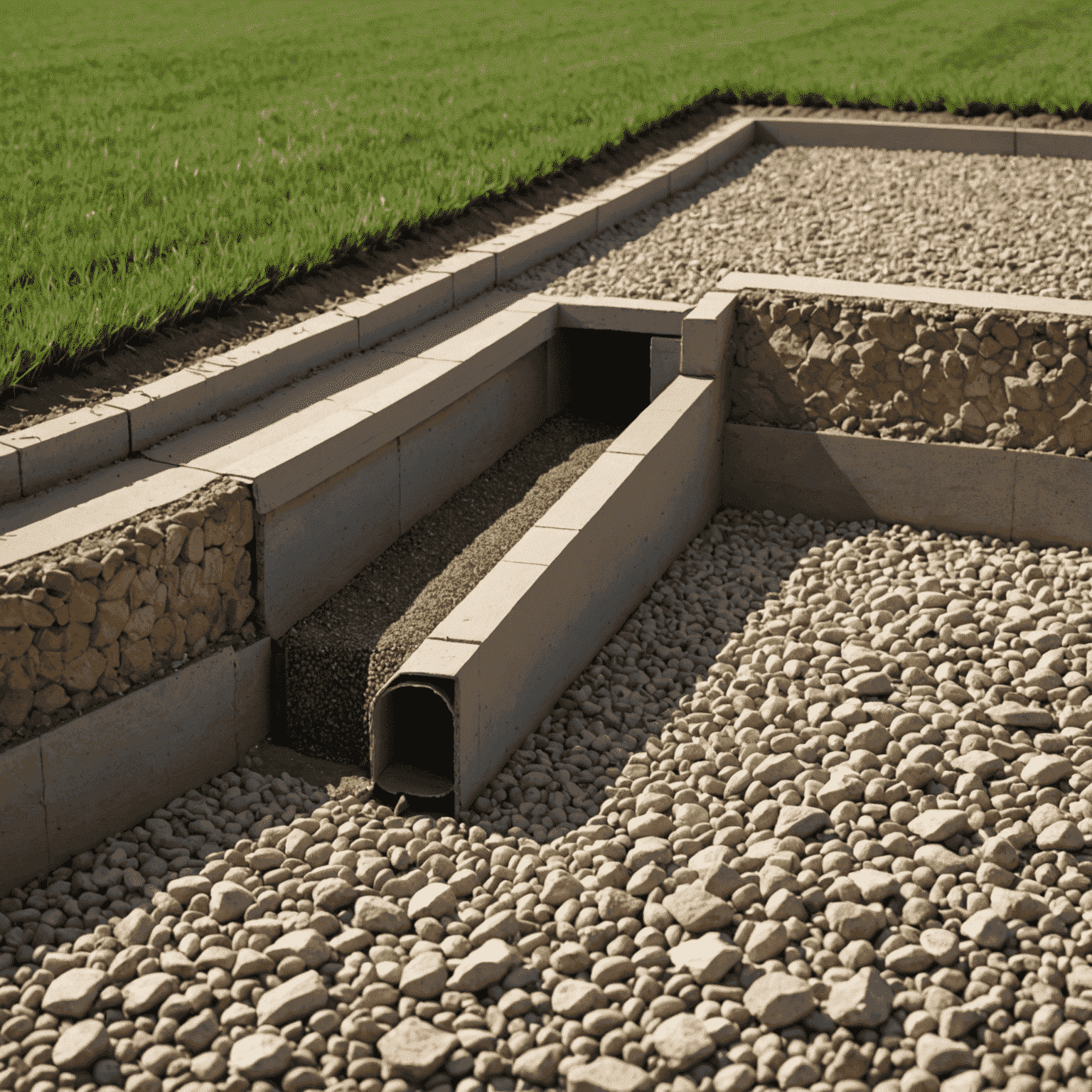French Drain Installation: A Step-by-Step Guide
Redirect water away from your property effectively with a French drain system. This guide will walk you through the installation process, helping you protect your home from water damage and improve your yard's drainage.

Explain a French Drain?
A French drain is a trench filled with gravel or rock that contains a perforated pipe. It redirects surface water and groundwater away from an area, preventing water accumulation and potential damage to your property.
Materials You'll Need
- Perforated pipe (4-inch diameter recommended)
- Landscape fabric
- Gravel or crushed stone
- Sand (optional, for bedding)
- Shovel or trenching tool
- Level
- Tape measure
- Work gloves and safety glasses
Step-by-Step Installation Guide
1. Plan Your Drain Route
Determine where water is pooling and plan a path for the drain that slopes away from your home. The ideal slope is about 1 inch per 8 feet of length.
2. Dig the Trench
Excavate a trench along your planned route. It should be about 18 inches deep and 12 inches wide. Ensure the bottom of the trench slopes consistently away from your house.

3. Line the Trench
Cover the bottom and sides of the trench with landscape fabric, leaving enough excess to fold over the top later. This prevents soil from clogging the drain.
4. Add Gravel Base
Pour a 2-3 inch layer of gravel on top of the fabric at the bottom of the trench.
5. Lay the Pipe
Place the perforated pipe on the gravel bed, ensuring it's level and sloping correctly. The holes should face down to prevent clogging.
6. Cover with Gravel
Fill the trench with gravel, covering the pipe completely. Leave about 2-3 inches of space at the top.

7. Fold and Secure Fabric
Fold the excess landscape fabric over the top of the gravel layer to create a barrier against soil intrusion.
8. Backfill and Finish
Cover the fabric with soil, slightly mounding it to allow for settling. You can then lay sod, plant grass, or add other landscaping elements.
Maintenance Tips
- Regularly inspect the drain's exit point to ensure water flows unobstructedly.
- Clear any debris that might block the drain's entrance.
- Consider flushing the system annually with a garden hose to remove any accumulated sediment.
Pro Tip:
For areas with heavy clay soil, consider adding a layer of sand beneath the pipe to improve drainage and prevent shifting.
By following this guide, you'll be able to install an effective French drain system that protects your property from water damage and improves your yard's overall drainage. Remember, if you're unsure about any step or if your drainage issues are severe, it's always best to consult with a professional landscaper or drainage expert.